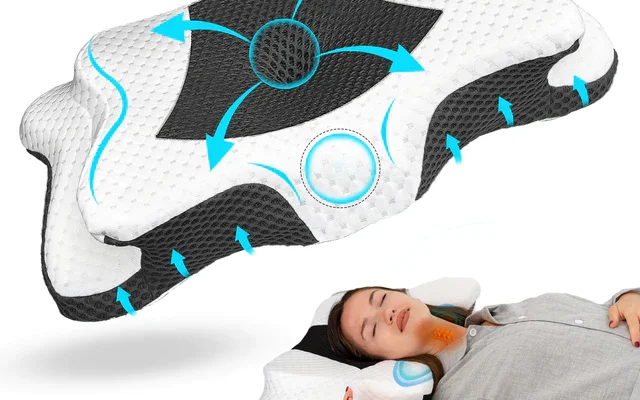In today’s fast-paced world, neck pain has become a common ailment for many individuals. Whether it’s due to long hours spent at a desk, poor sleeping posture, or other factors, finding relief from neck pain is a top priority. One popular solution that has gained immense popularity in recent years is memory foam pillows. But are memory foam pillows really the best option for alleviating neck pain? In this comprehensive article, we will delve into the world of memory foam pillows, their benefits, and whether they are indeed the ideal choice for those suffering from neck pain.
1. Introduction
Neck pain can be debilitating, affecting our daily lives and overall well-being. It’s essential to explore effective remedies that not only provide comfort but also address the root causes of the pain. Memory foam pillows have gained immense popularity due to their reputation for superior comfort and support. But do they live up to the hype when it comes to alleviating neck pain? Let’s find out.
2. Understanding Neck Pain
Before we delve into the benefits of memory foam Pillows, it’s crucial to understand the factors contributing to neck pain. Neck pain can result from poor posture, muscle strain, injury, or underlying medical conditions. It’s essential to identify the cause of your neck pain to choose the most appropriate solution.
3. What Are Memory Foam Pillows?
Memory foam pillows are made from viscoelastic foam that conforms to the shape of your head and neck. They are designed to provide optimal support and comfort while you sleep. The unique properties of memory foam allow it to react to your body heat, ensuring a customized and snug fit.
4. How Do Memory Foam Pillows Work?
Memory foam pillows work by contouring to the natural curves of your neck and head, offering support where it’s needed the most. This alignment helps reduce pressure points and can alleviate discomfort associated with neck pain.
5. Benefits of Memory Foam Pillows
- Pressure Relief: Memory foam pillows distribute weight evenly, reducing pressure on the neck and shoulders.
- Spinal Alignment: Proper alignment of the spine can help alleviate neck pain.
- Durability: Memory foam pillows are known for their longevity, providing long-term support.
- Hypoallergenic: They are resistant to dust mites and allergens, making them suitable for allergy sufferers.
6. Choosing the Right Memory Foam Pillow
Not all memory foam pillows are created equal. It’s essential to consider factors like pillow thickness, firmness, and your sleeping position when selecting the right one for your needs.
7. Tips for Using Memory Foam Pillows Effectively
To maximize the benefits of Memory Foam Pillows, follow these tips:
- Proper Pillow Height: Ensure the pillow’s height supports your neck’s natural curve.
- Regular Pillow Rotation: Rotate the pillow to maintain its shape and support.
- Keep It Clean: Use a removable and washable pillowcase to maintain hygiene.
8. Alternative Pillow Options for Neck Pain
While memory foam pillows are popular, there are alternative options like cervical neck pillows, water pillows, and feather pillows. We’ll explore these alternatives and their benefits.
9. Real User Experiences
Hearing from individuals who have used memory foam pillows to alleviate neck pain can provide valuable insights into their effectiveness.
10. Common Misconceptions About Memory Foam Pillows
Let’s address some common misconceptions and myths about memory foam pillows and their impact on neck pain.
11. Are Memory Foam Pillows Suitable for Everyone?
While memory foam pillows offer numerous benefits, they may not be suitable for everyone. We’ll discuss who should consider using them and who might need to explore other options.
12. Conclusion
In conclusion, memory foam pillows can indeed be an excellent choice for individuals seeking relief from neck pain. Their ability to conform to your body’s shape and provide support can significantly improve your sleep quality and reduce discomfort. However, it’s essential to choose the right pillow and ensure it aligns with your specific needs and preferences.



